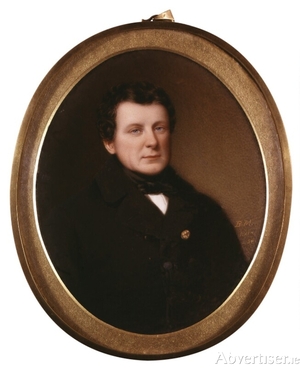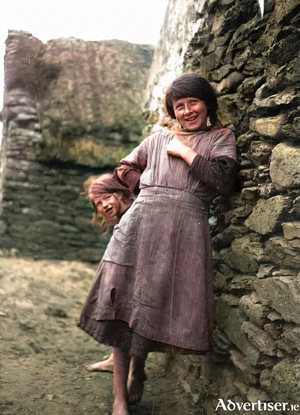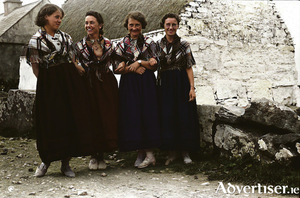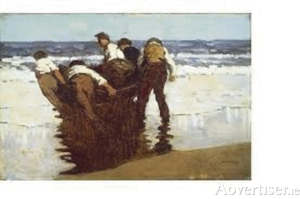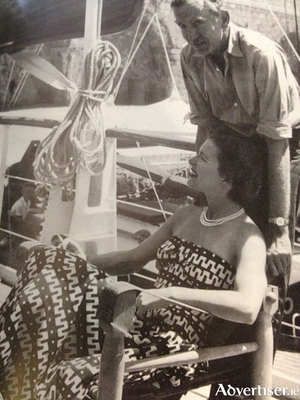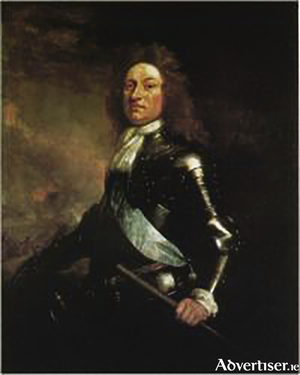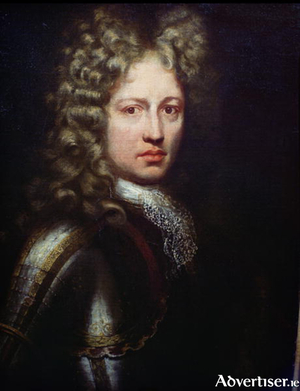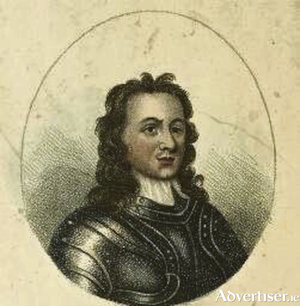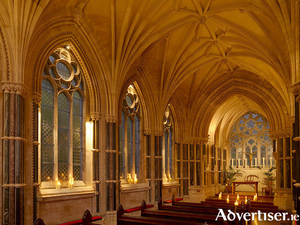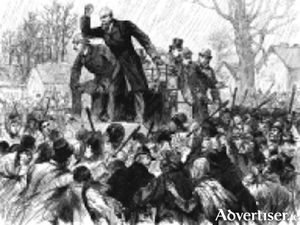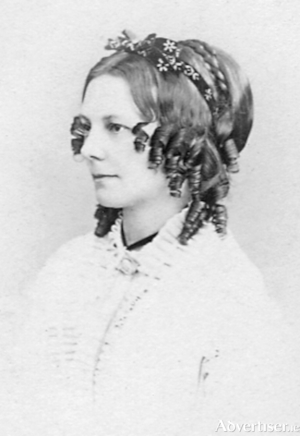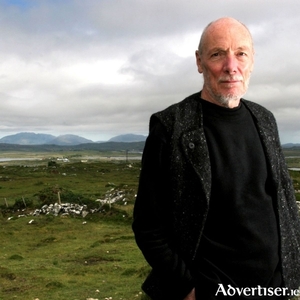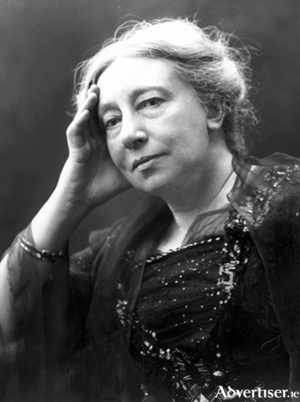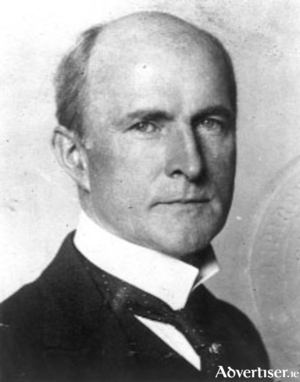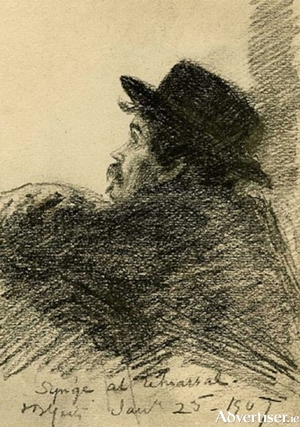‘It is rather the want of the middle class…’
Thu, Sep 17, 2020
For any visitor to Dublin in the early 19th century, to miss seeing the great Daniel O’Connell would have made their visit almost worthless. William Makepeace Thackeray, on the threshold of becoming one of the greatest writers of the English language, spent three months touring Ireland in 1842 collecting his impressions of the ‘manners and the scenery’ of the country and its people, for his successful Irish Sketch Book published some years later. Back in Dublin at the conclusion of his tour he lost no time heading to the Mansion House to see the Liberator in person.*
Read more ...‘Ireland will be poor no longer’
Thu, Sep 10, 2020
From the comforts of Ballynahinch, such as they were at the time, William Makepeace Thackeray continues his exploration of the surrounding countryside as he gathered information for his successful Irish Sketch Book published some years after his tour in 1842.
Read more ...There was a story told of a mermaid seen at Killala Bay
Thu, Sep 03, 2020
Continuing his wry and sardonic observations on the personalities, and the heaving populated life that he encounters on the roads, towns and villages along the way, the young William Makepeace Thackeray continued his journey through Connemara. In 1842 he spent four months on an extensive tour of this island, and later published his observations in the well received Irish Sketch Book to which he added numerous drawings mainly of the people he met. Yet for all his sceptical comments he is genuinely moved by the landscape of Connemara, and writes eloquently on intimate moments.
As his ‘car’ passes through Oughterard he exclaims ‘a more beautiful village can scarcely be seen than this’. He is on his way to stay three days at the Martin estate at Ballynahinch, and to test the legendary trout lakes around it. From there he would visit Roundstone, and Clifden before heading into the mountains of Co Mayo.
Read more ...There was a story told of a mermaid seen at Killala Bay
Thu, Sep 03, 2020
Continuing his wry and sardonic observations on the personalities, and the heaving populated life that he encounters on the roads, towns and villages along the way, the young William Makepeace Thackeray continued his journey through Connemara. In 1842 he spent four months on an extensive tour of this island, and later published his observations in the well received Irish Sketch Book to which he added numerous drawings mainly of the people he met. Yet for all his sceptical comments he is genuinely moved by the landscape of Connemara, and writes eloquently on intimate moments.
Read more ...William M Thackeray enjoys a play, and continues his journey
Thu, Aug 27, 2020
‘Aughrim is no more, St Ruth is dead,
And all his guards are from the battle fled,
And all his guards are from the battle fled,
Read more ...‘Words and music are the thing here….’
Thu, Aug 13, 2020
In midsummer 1910 the artists Paul Henry and his wife Grace crossed the bridge into Achill Island, on the west coast of Co Mayo. They were both competent artists, but for Henry Achill was to be his great inspiration, leading to a style and an interpretation of the west of Ireland landscape that was to make him famous, and his work instantly recognisable.
Read more ...Two writers on Achill
Thu, Aug 06, 2020
Achill Island, one of the most spectacular and the largest of our islands off the Irish west coast, was the romantic love-nest for a passionate affair between the British novelist Graham Greene and Catherine Walston the vivacious American wife of millionaire British MP Harry (later Lord) Walston in the late 1940s.
Read more ...Galway’s secret ministry during Penal Times
Thu, Jul 30, 2020
The Treaty of Limerick, October 3 1691, which was mainly a military success for the Irish/Jacobite army, was indecisive on its civil articles; and those which were agreed were soon ignored by a vengeful Protestant parliament.
Read more ...A time when grass grew on Galway streets
Thu, Jul 23, 2020
It is generally agreed that the treaty signed between the Williamite general de Ginkel, and the Irish/Jacobian Patrick Sarsfield, on October 9 1691 in Limerick, was a very satisfactory military outcome for both sides, but not a satisfactory outcome for Catholic Ireland who, with the loss of her armies, was left at the mercy of a vengeful Protestant parliament.
Read more ...Galway awaits its fate in ‘a state of nervousness and excitement’
Thu, Jul 16, 2020
Following the victory of King William’s army at Aughrim July 12 1691, the people of Galway awaited their fate in fear and uncertainty. William’s Dutch general Godert de Ginkel, had moved from his headquarters at Athenry, and was now on his way to subdue the town. He had shown ruthless determination in his dealings with the Irish Jacobite army; the citizens must have expected nothing less.
In Hardiman’s famous history however, he digresses from his narrative at this point, to include the bizarre story of Balldearg O’Donnell. ‘A persecuted people will grasp at every shadow in expectation of deliverance’, he sagely remarks; in what a pathetic man, as we shall see, did Galway place its misguided hope for deliverance.
Read more ...Treachery at Aughrim
Thu, Jul 09, 2020
The last conventional battle in Irish history was fought on Sunday July 12 1691 at Aughrim, Co Galway. It was by far the bloodiest. In less than 8 hours approximately 8,000 men were killed. Six thousand of them were Irish Jacobites.
Read more ...Catastrophy in the heat of battle
Thu, Jul 02, 2020
In the early days of July 1690 the citizens and merchants of Galway must have viewed with growing alarm the collapse of the Jacobite army at the Boyne, and the march westwards of the Williamite forces determined to strike a final blow.
Read more ...The boy who grew up beside a battlefield
Thu, Jun 25, 2020
As a small boy Joe Joyce played soldiers on the fields of Aughrim, a small village in Co Galway, between the towns of Loughrea and Ballinasloe. In his early years the games were fun, running among the ditches with his sisters Marie and Cepta, playing around the ruined castle, gazing across the flat east Galway countryside from Kilcommadan Hill, far from the reality of where bitter and often hand to hand fighting took place; and where just before dark, on that fateful wet Sunday July 12 1691, the fearless Scottish general Hugh Mackey led a one-thousand strong cavalry charge into the reeling Irish Jacobite infantry to win the day.
Read more ...‘A pale granite dream, afloat on its own reflection’
Thu, Jun 18, 2020
Mitchell Henry’s final days in Kylemore were sad ones. His adored wife Margaret had died at 45 years-of-age, and rested in a simple brick mausoleum in the grounds of his palatial Kylemore Castle. His political life, into which he put a great deal of personal effort, advocating on behalf of all Irish tenants the rights for them to own their own land, was out manoeuvred by Charles Stewart Parnell and the Land League. Henry described the Land League methods as ‘dishonest, demoralising and unChristian’. He probably was not surprised to lose his Galway seat in the general election of 1885. He blamed ‘Parnellite intimidation’.
Read more ...‘It is not our mistress we have lost, but our mother.’
Thu, Jun 11, 2020
When Mitchell Henry entered Westminster parliament in 1871 he went with hope in his heart and a mission to tell the British people the circumstances of the Irish tenant farmer. He reminds me of the Frank Cappa film Mr Smith Goes to Washington where a naive, idealistic young man has plans to change America.* Mitchell Henry, a liberal, kindly man, had however, walked into a political cauldron, waiting to explode.
Read more ...A fantasy of romantic days of yore
Thu, Jun 04, 2020
It must have been an extraordinary sight in the 1860s to see Kylemore castle rise from a bog in the heart of Connemara’s Twelve Pins, barely a decade following the devastation of the Great Famine. More than 100 men were employed, at a handsome wage of seven to 10 shillings a week, turning rough, soggy land, only good for shooting wild fowl and for fishing in its nearby lakes, into a magnificent building. Today it stands more like a palace than a castle, and is still a show-stopper on the Letterfrack road.
Read more ...Hearing voices in the wind
Thu, May 28, 2020
I have often wondered how the unusual name of Zetland found its way to the head of Cashel Bay in the heart of Connemara. It is, of course, the name of a well known hotel today. The hotel was founded in the closing years of the 19th century, by the son of a mountain farmer, JJ O'Loughlin, who had a canny instinct for business. The hotel was originally called The Zetland Arms, and before that The Viceroy's Rest. All these names allude to the hotel's distinguished patron Lawrence Dundas, Viceroy or Lord Lieutenant of Ireland from 1889 to 1902, in which year he became the Marquis of Zetland.
Read more ...‘That rapture of friendship that so possessed and satisfied me.’
Thu, May 21, 2020
In 1911 the successful and popular Theodore Roosevelt had recently completed his two-terms as president, but was still a man of incomparable influence, when the Abbey Theatre opened in New York on Monday November 27.
Read more ...The man from New York
Thu, May 14, 2020
The first time Lady Gregory met John Quinn was on Sunday August 31 1902 at a Feis Ceol she had partly organised in the memory of Ó Raifteirí the poet. The occasion also marked Lady Gregory’s first steps into the Celtic revival movement which would absorb her energies throughout her long life, and define her reputation for ever.
Read more ...Normal people disgusted at the Abbey Theatre’s Playboy.
Thu, May 07, 2020
Famously WB Yeats was giving a lecture in Aberdeen on Saturday evening January 26 1907, the opening night of the Playboy of the Western World at the Abbey Theatre in Dublin. Just before his lecture started he received a telegraph from Lady Gregory to say the first act was well received.
Read more ...